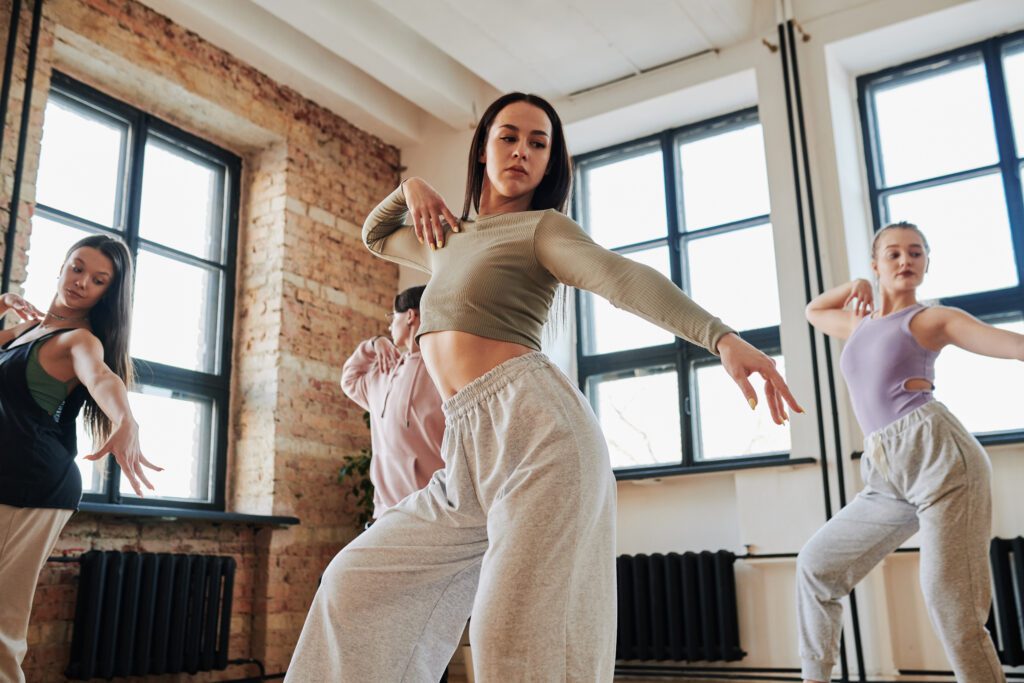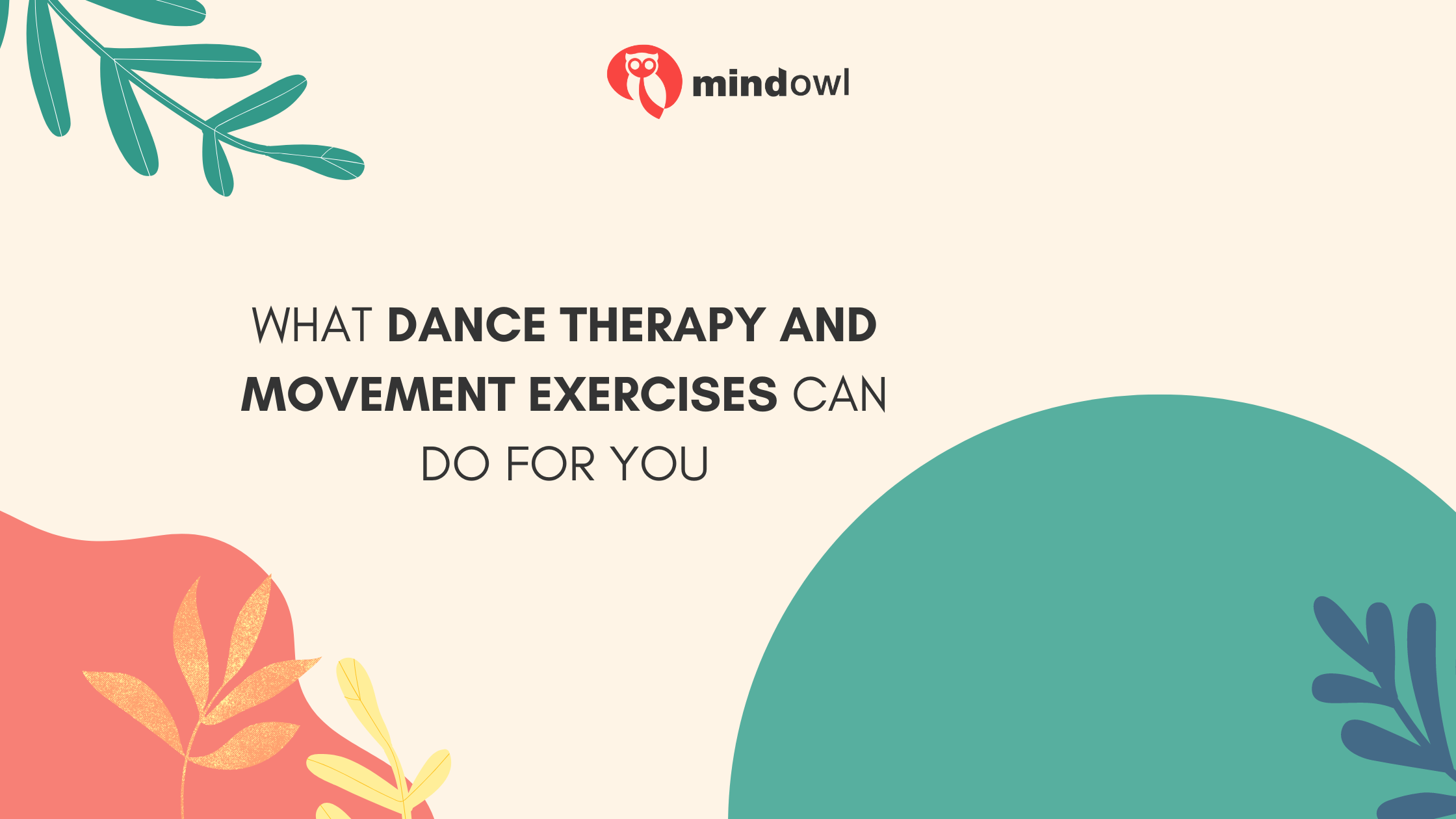This post was developed via a partnership with BetterHelp.
Dance is a universal form of human expression. In Argentina, there’s the passionate tango. The rhythmic stomping of the Flamenco has origins in Spain. There are polkas, waltzes, kabuki, and belly dancing. Dancing is performed around the world in many forms, and there may be possible wellness benefits for in dancing for your mental health.
Dance therapy recognizes the potential ways body movement can affect emotions. It is a form of psychotherapy that uses the movement of the body to enhance emotional strength and cognitive abilities. If you’re interested in learning more about dance as a form of therapy, check out BetterHelp resources on the benefits of dance therapy.
In this article, we’ll explore the ways dance therapy works and ways to practice movement exercise on your own to support mental wellbeing.

Our Human Relationship To Dance
Since the dawn of time, human beings have been engaging in movement as a form of communication, or dance. Belly dancing is our earliest known form of dance, which dates back to more than 8,000 years in Egypt and the middle east. Ballet dancing evolved in 15th century Renaissance Europe.
Even with so many forms of dance, humans never stop inventing new forms of movement. Popular new forms of dance keep popping up, such as hip-hop since the 1970s and flash mobs in the early 2000s. Dance continues to be an important way people express themselves.
What Dance Therapy Is And Isn’t
There are so many ways people continue to enjoy and explore movement in the form of dancing. Yet, not as many people tend to understand the potential therapeutic benefits of dancing and movement.
First of all, dance therapy is not about being coordinated or doing complicated dance steps. If you’ve ever watched “Dancing With The Stars” and thought about how difficult it must be to learn all those steps, take heart. Dance therapy is about moving your body in a way that feels natural and good to you, it doesn’t involved complex choreography.
No one needs to be a natural dancer to experience the potential mental health benefits of dance therapy, and you certainly don’t have to learn any special dance steps. In fact, it may be easier to get in touch with the expressive possibilities of dance for someone who has had little or no instruction in dance. By not being overly preoccupied with following certain steps, it may be easier to get the therapeutic benefits of movement therapy.
How Dance Therapy Can Support Mental Wellbeing
According to the American Dance Therapy Association (ADTA), dance therapy can help enhance health in a holistic way that includes a person’s physical, mental, emotional, and social wellbeing. One of the key tenets of the ADTA is that a person’s body cannot be separated from their mind, and they can mutually influence each other.
The ADTA holds that movement and dance can serve three primary purposes in supporting a person’s overall mental, physical, emotional, and social health:
- Dance, like other visual art forms, is a form of a nonverbal communication. Just because dance doesn’t involve a spoken language doesn’t mean that there isn’t communication taking place. Meaning and emotion are conveyed through dance and human movement.
- Movement can serve functional, expressive, and developmental purposes. The ADTA holds that dance can help people get in touch with their emotions, improve mental health function, and accelerate their development. Movement isn’t just about moving one’s arms around or pointing your toes a certain way, dance has purpose.
- Movement and dance can also serve as a diagnostic tool that can aid in both assessment and intervention. Therapists and practitioners may be able to better diagnose and identify health conditions in people practicing dance therapy.
Which Conditions Can Dance Therapy Potentially Treat?
According to a meta-analysis looking at possible benefits with dance therapy, there a wide range of ways dance therapy has been shown to help people. The research in the study showed evidence of dance therapy improving anxiety and depression, cognitive ability to think and remember, interpersonal skills, and general quality of life. In addition, the researchers demonstrated certain indications that these might be long-term benefits, not just temporary.
Movement Exercises To Try At Home
Even though it won’t be the same as having a dance therapist guide you through movements and a specific course of treatment, there are benefits to be gained by becoming more mindful of your movements.
Generally some good goals of doing movement at home without a professional would be to create stronger connections between the body and mind through movement, and to feel more in touch with your feelings, thoughts, and sensations.
And no matter which of these exercises appeals to you, try to keep in mind the practices of mindful observation without judging what’s going on. Be curious and notice what’s going in your body and in the feelings that come up. There’s nothing to do other than observe. Let’s take a look now at a few exercises to try.
The Free Dance Exercise
In the free dance exercise, you’ll set aside a specific amount of time to dance. You don’t have to do any certain style of dancing. Free dance should be whatever appeals to you in a certain moment, there’s no wrong way to do it or right kind of dancing. Even being still can be a choice in movement therapy.
But it can be helpful to set up a playlist before you start. Think of the kinds of songs you like moving to and whether you want something faster and more upbeat. Or maybe you prefer something slower and more fluid – you may even want a combination of both to help you access different moods and forms of expression.
A good tip is to try putting together a playlist of songs that will keep you moving for about 20 minutes. You don’t have to move for the entire 20 minutes to benefit from the exercise, but it’s good to have songs continuing to play if you’re feeling the movement and don’t want to stop.
The Energy Of Emotions Exercise
In this exercise, you simply pick an emotion or feeling that’s been bothering you. This could be any negative feelings you’ve developed around a situation, which has been causing you stress. Maybe you’ve been having conflict with your partner, which leaves you feeling abandoned or sad. It can be any emotion that’s causing you distress. Then you turn that feeling into movement.
Once you’ve selected an uncomfortable feeling to work with, let yourself go into that feeling without forcing yourself. As always, if you become overwhelmed by a situation, it’s important to seek help from a licensed therapist who is trained to address mental conditions.
However, you wish to express that emotion is up to you! There is no right or wrong way to dance to the emotion you’ve chosen to work on through dance and movements. Let the emotion flow through you without judging it. Feel the sensations as you move. By coming into contact with the unpleasant event and being okay, you may be able to feel more agency in the way you manage any negative feelings you’re working on within your dance.
The Dance Of Nature Exercise
In this movement exercise, you’ll explore what it feels like to be something in nature. That could mean expressing what it feels like to be a thunderstorm or how a small seedling becomes a sturdy oak tree. The process here involves following the entire arc of the natural phenomena you’ve chosen.
For example, you may go from stillness to a twisting spiral and back to stillness if you’re expressing what it’s like to be a tornado touching down on land. Think about what made you want to explore a particular natural occurrence in more depth. What are the ways you feel transformed by the process?
The Authentic Movement Exercise
The authentic movement exercise is slightly more meditative, as it is practised without sound. There are also no prompts to follow. You won’t be told to move like a tree. For this reason, it may be considered a more advanced form of movement exercise rather than for a beginner.
To begin an authentic movement practice, you’ll start in stillness. Then wait to feel what moves you. In this way, authentic movement is a form of mindfulness-based movement. It’s more about paying attention to what’s going on inside you rather than following a certain set of instructions. Be patient in stillness. Move only when you feel the urge bubble up from inside. Complete the movement where it feels right to end that particular movement. Begin again in stillness.
You can repeat the exercise as many times as you feel is helpful. Often setting a timer for between 10-15 minutes is a good place to start, but there are no hard and fast rules about how long you need to practice. Even one authentic movement could be enough to leave you feeling more in touch with your body and emotions, a feeling that may help you feel more in control of your life.
In Conclusion
Dance and movement therapy has been shown to offer wide-ranging mental, physical, and emotional benefits that may be long-lasting. Happily, there are many ways to practice movements and express yourself through dance that may yield positive health benefits as well. But please don’t hesitate to seek support from a licensed therapist who can guide you. There’s help out there for mental illness, and no one should feel like they have to do it all on their own.
MindOwl Founder – My own struggles in life have led me to this path of understanding the human condition. I graduated with a bachelor’s degree in philosophy before completing a master’s degree in psychology at Regent’s University London. I then completed a postgraduate diploma in philosophical counselling before being trained in ACT (Acceptance and commitment therapy).
I’ve spent the last eight years studying the encounter of meditative practices with modern psychology.

